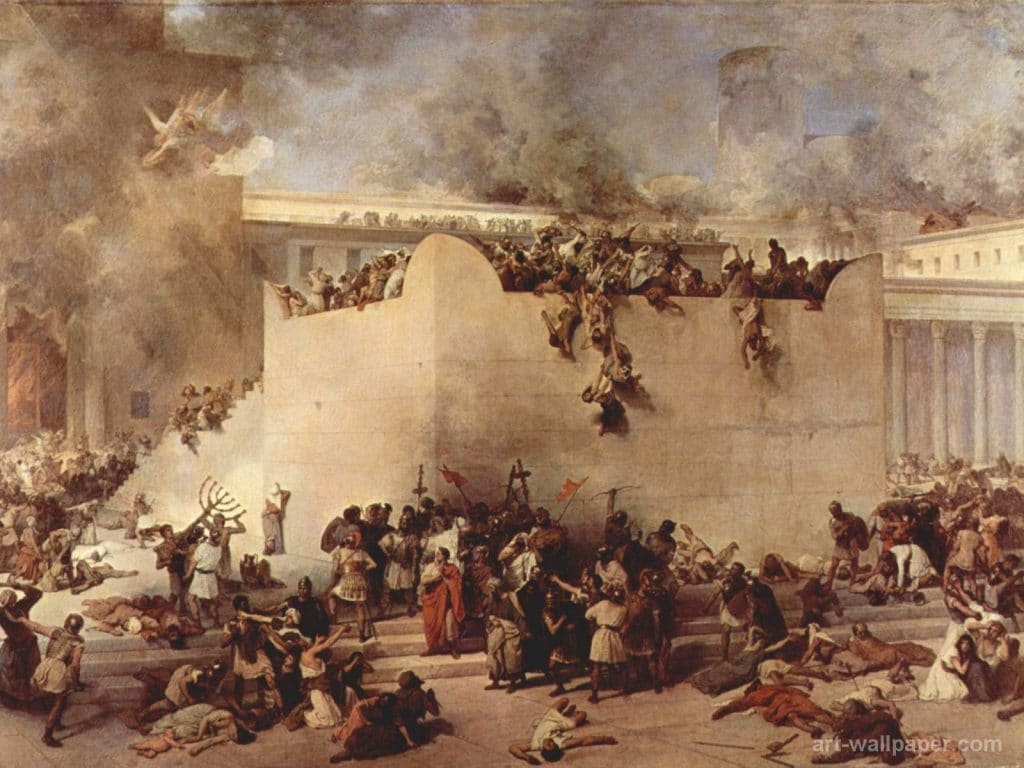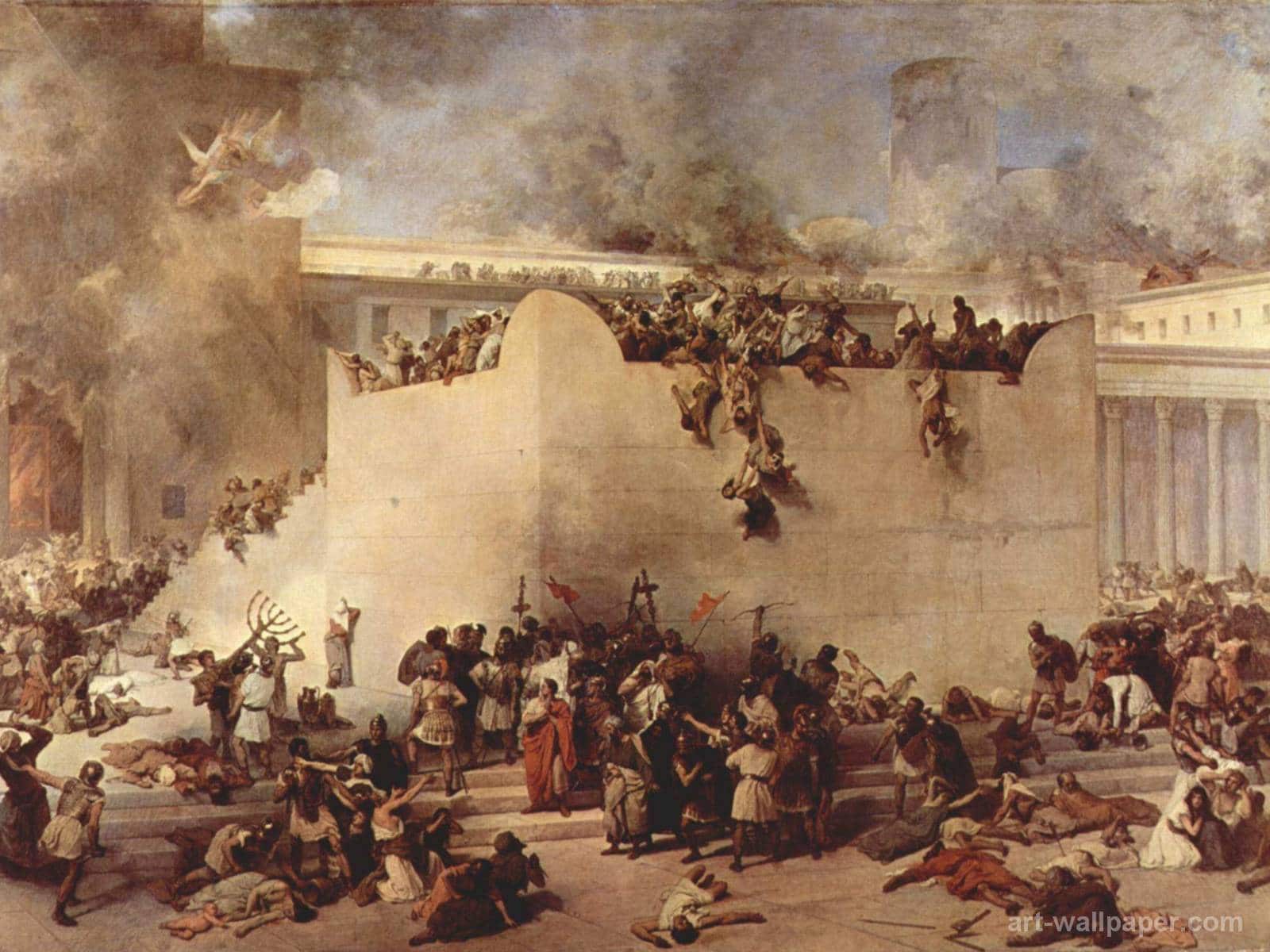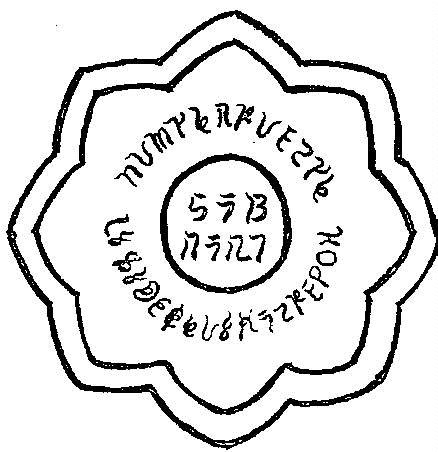
Think of a story reminiscent of Raiders of the Lost Ark — only set in Japan and Israel. Ben Midland’s novel The Sacred Mirror features American professor William Sandwell’s quest to find a holy Japanese relic stolen by a religious fanatic. With the help of a half-Japanese, half-British archaeologist, Catherine Yamazaki, and Japanese police inspector Akio Yamashita, the trio scour Japan for Yata no Kagami, a 2,500 year-old bronze mirror the Japanese Imperial Family has protected and which is considered the divine origin of Japanese emperors.
A shocking discovery awaits them.
We’re writing in the year 598 B.C. Because of their idolatry to the bull god Baal (Yahweh) and his consort, queen of Heaven Asherah as well their unfaithfulness to Nebuchadnezzar their king, twelve Jewish tribes led by the sons of patriarch Jacob were exiled. Their expulsion resulted in an exodus which culminated in 597 B.C. by the destruction of the Temple in Jerusalem.

Just in time, moments before Assyrian and Babylonian soldiers entered the sanctuary, temple priests were able to rescue some of the most important relics. Among them was a mirror called Marot ha Tzovot. (Lens of Prophecy).
Kept in its acacia wooden tabernacle they carried the bronze made mirror with them, away from the Promised Land into the desert, forced to travel eastward, afraid to be enslaved or killed by the Assyrians and Babylonian troops.
Ongoing wars and hunger in Persia drove them further and further to the east, crossing Syria, Iraq, Persia (Iran) and Pakistan. Marching through the Takla Makan desert they followed the road to China, later to be known as the Silk Road.
Only in 538 B.C., Cyrus the Great, king of Persia permitted the Jewish tribes to return to their home land. Two of them found their way back. Ten remained lost, scattered over the rest of the world. Among them was Judah’s tribe.
Wondering through China the tribe of Judah arrived in Silla, a former province in the land what now is known as Korea where they developed the risky plan to cross the Sea of Japan, by then known for its suddenly appearing storms.
Their ultimate goal was an island empire called “Wa” (nation of dwarfs) as the Chinese called it, lying beyond the known world. It was this country where they believed to be safe.
With the holy mirror in their possession, a small group of them, led by their chief Yuzuki no Kimi (superior moon-Lord), crossed the Sea to Japan from where it took them a week to arrive on Honshu, the largest island of Japan.
Once stepped ashore they found a divided country, occupied by incoherent gangs of farmers, fishermen and artisans, gathered into tribes slaughtered each other.
Japan was in lack of a strong ruler, capable and able to tie up the tribes and weld the divided regions together into a homogenous nation. The leader of the Yamatai tribe, a fierce shamanic queen named Himiko, the only one who possessed these qualifications battled the other tribes to gain absolute domination over the land. By shedding blood, usage of dark forces, magic and manipulation of her own people and she triumphed, finally renaming the land into Yamato.

The mirror, Marot ha Tzovot fell in Himiko’s possession. As a shamanic priestess, she considered the mirror to be a gift from the gods. This meant the start of another long and bloody period of battle. Himiko carried out her fights against the last resisting forces. Most of them, all tribal warriors were killed or enslaved, others joined voluntarily Himiko’s seemingly invincible army.
One night the sun goddess Amaterasu Omikoto visited Himiko, also called Yamatohime (heavenly princess) in her dream, reminding her of the mirror she took away from the migrant tribe. Amaterasu commanded her to search for a permanent location for the mirror. Himiko could not reject this heavenly request.
One day, during her quest looking for such place, Himiko (Yamatohime) rested at the side of the river Isuzu in the southwest of the country. There, in a vision Amaterasu told her that this was the place where she liked the mirror to be kept and where she desired to be worshiped. Himiko built a sanctuary on that place, the very same location where later the Imperial shrine of Ise raised.
Long after Himiko’s death in 248 A.C., the immigrant tribe of Judah, now recognized as a local tribe received a new name by Imperial decree. From that time they were allowed to call themselves Hata, a derivative of the verb hataori, what means “weaving”.
It came to know by Emperor that the Hata were very talented in cultivating silkworms and weaving silk. Also their understanding of financial matters and occultism was extremely appreciated at the court what resulted in their special status at in the Imperial household.
In the following relatively quiet centuries the country prospered. The Hata clan became fully integrated within the Japanese society.
Prolonged and intensive contact with China led to the introduction of writing, initially performed only by members of the court and clergy. Around the year 700 the history of Japan became written, resulting in the first of two chronicles, the Kojiki. This artwork of literature described the creation of Heaven and Earth according to the Japanese, as well as the history of the Japanese archipelago and more specific the divinity of the Emperor and his ancestors.
In the years that followed, wars between clans flared up. In 1274 and 1281 Japan escaped from attacks from Mongol tribes, led by dictator Kublai Khan.
Finally, after a long period of feudal government and 400 years of voluntary isolation imperial power became restored. In the 1900’s Emperor Meiji ascended the throne. Shinto, the “Way of the Gods” became the state religion in which the mirror started to play an important role. Renamed to “Yata no Kagami” (Eight Hand Wide Mirror), the relic caught the attention of the public being one of the Imperial Regalia, together with a mythical sword and a jewel.
The consequence was that palace ritualists, descendants of the Hata tribe had to take measures to prevent the relic to go public what would have caused great damage to Japan. The reason was that an inscription in Hebrew, engraved on the back of the mirror unveils the origin of the mirror and thus the truth about the origin of the relic would become known. They decided to transfer the mirror into a hermetically sealed container called mihishiro, a gold-coated cypress wooden copy of the original tabernacle to prevent prying Shinto priests could cast a glance during the displacement of the mirror to a newly built sanctuary, held every 20 years.
Despite all measures, certain people, among them politicians, a scholar and a fanatic religious elite-mariner who practiced occultism were able to take a peek at the mirror after putting pressure on Shinto priests. During their confrontation with the mirror some copied the inscription to paper, just for scientific research and for his alleged occult powers, as they said. Tragically none of these people died a natural death after seeing the inscription.

It will happen this year on October 2, during the Shikinen Sengu ceremony that the sacred mirror shall be moved again to a newly built sanctuary, this time for the 63rd time since 1300 years in succession.
Japanologist Ben Midland’s faction novel tells the story about what happens a few months before the ceremony, when all the preparations are in full swing and the relic got stolen by a religious fanatic.
William J. Sandwell, an American professor in Shinto, working for many years in Japan and Catherine Yamazaki, British/Japanese archaeologist are forced by the Imperial Household Agency to find the mirror bringing it back before the ceremony begins. During the quest that takes place on the main island of Japan they withstand confrontations between them and the party responsible for the theft.
Despite the secret nature of the operation, various other individuals are able to track down the mirror. Their quest goes along with fights with the other party on remote shores and forests. Finally, together with unraveling the myth, the motive of the perpetrators becomes clarified. A shocking discovery awaits them.
If you would like to find out more about this faction novel then contact the author Ben Midland at http://www.benmidland.com/

Comments 5
Hi Ben,
Can’t wait to read your novel, how exciting! I know it is out in Dutch already so maybe I need to get my hands on a Dutch copy 🙂
Cheers
Frans
Dear readU.Sers,
I proud and happy to announce that as of February 6 this year, my novel “The Sacred Mirror” was released. This work, a translation of the previous in Dutch released novel “De Spiegel van Ise” is available worldwide by Amazon, Barnes & Noble (U.S.) and all Waterstone bookstores in the UK. For Australia, check your local bookstore or order with America Star Books Publishers, USA.
Available as E-book (Kindle) and soft cover. A hard cover is available by special order.
Have fun!
Hi Ben,
I see it is even on kindle, well done!
Love
Frans
Hi Frans,
I’m glad you’re happy with it. I hope that with some help of my Australian friends this novel will become very successful. Some Japanese publishers showed their interest already and I heard that my own publisher thinks about presenting it to Ophrah’s bookclub.
All support is welcome! Like my page on Facebook: The Sacred Mirror and share it among the readers of this great blog!
That is great news Ben, you are on the ball.
Might even become a movie!